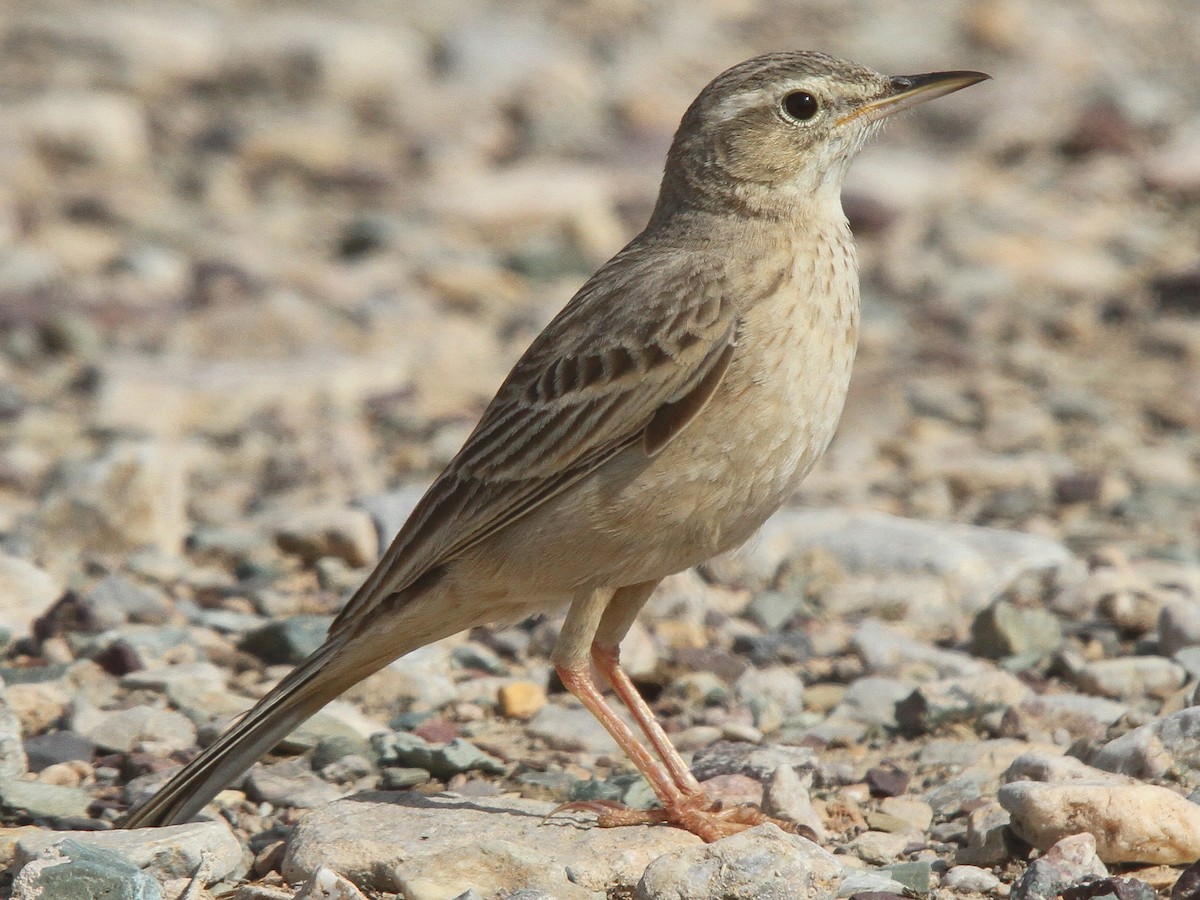
Long-billed Pipit
Anthus similis
Order:
Family:
Size:
17-20 cm
Weight:
M 30-35 g
Taxonomy:
(Finsch, 1870)
Short Description:
The long-billed pipit or brown rock pipit (Anthus similis) is a passerine bird which has a wide distribution. A number of subspecies have been created for the populations in Africa, through the Arabian peninsula and South Asia. The systematics of this complex is yet to be clarified. Most birds are residents or short distance migrants. This is a medium-large pipit, 16-17.5 cm long, but is an undistinguished looking species on the ground, mainly sandy grey above and whitish or pale buff below. It is very similar to the tawny pipit, but is slightly larger, has a longer tail and a longer dark bill. The long-billed pipit's flight is strong and direct, and it gives a characteristic chupp call, similar to desert lark. Its song is like that of the tawny pipit, but slower and more varied, sri...churr...sri...churr…sri..churr. Like its relatives, long-billed pipit eats seeds and insects. The long-billed pipit's breeding habitat is dry open slopes with rocks and low vegetation. The nest is on the ground, with 2-4 eggs being laid. In Pakistan, Long Billed Pipits are common resident, breeding in dry rocky areas throughout Baluchistan, KPK, Lower Chitral, and across Hazara District to the Murree Hills upto 2400m. Avoids forest, preferring bare open hillsides in the north and low stony slopes in sind Kohistan.
Far far away, behind the word mountains, far from the countries Vokalia and Consonantia, there live the blind texts. Separated they live in Bookmarksgrove right at the coast
Attock,Khushab,Rawalpindi,Dadu,Jacobabad,Karachi Central,Larkana,Khyber,Kurram,North Waziristan,South Waziristan,Haripur,Kohat,Mardan,Chitral,Lower Dir,Swat,Upper Dir,Nowshera,Peshawar,Dera Bugti,Kachhi,Kalat,Dera Bugti,Kachhi,Kalat,Khuzdar,Kohlu,Lasbela
Long-billed Pipits are ground-dwelling birds, often found foraging for insects and seeds in grassy areas. They are known for their distinctive undulating flight pattern, where they fly short distances low over the ground before dropping back down. During the breeding season, males may perform aerial displays to attract mates. These birds are generally solitary or found in pairs outside of the breeding season.
Far far away, behind the word mountains, far from the countries Vokalia and Consonantia, there live the blind texts. Separated they live in Bookmarksgrove right at the coast
About Photographer : Hello World
Facebook
Twitter
Instagram
Flicker
LinkedIn

